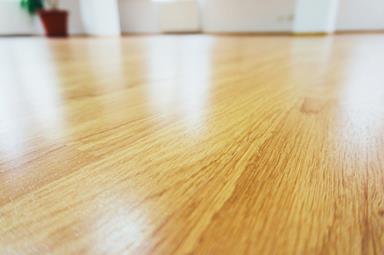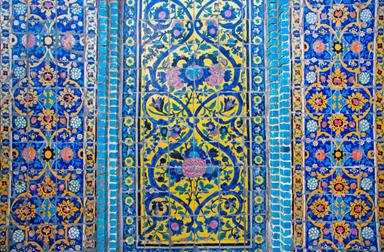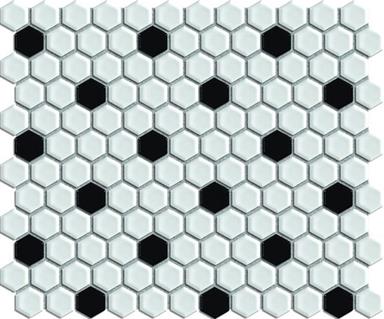All You Need To Know About Renovation Costs (Part 1)
5 minutes read
12544 views
12544 views
People often fret about which sofa to purchase, or which bed they would feel the most comfortable in. But they tend to forget that the floor they step on is equally important. Therefore, we decided to dedicate the first part of this series to the 3 popular types of flooring in Singapore!
Before you choose any type of flooring, you need to know what the room will be used for, how much your budget is, and the design you want to achieve. To get the best deals for your choice, you should visit many stores to compare the prices and designs available.
1. Laminated Flooring

If you’re considering doing laminated flooring, which is highly popular due to its affordability, ease of maintenance and installation, here are the pros and cons.
Pros:
·Maintenance and durability
With high resistance to stains and scratches, laminated flooring can keep their shine without any marks or dents for a long time. Even if it gets dirty, it can be cleaned easily with simple chemicals. This makes it very ideal for commercial use where there is high traffic, or if you are a pet owner. The floors are cleaned with simple solutions. It is estimated to last till 20 years.
·The cost
There are different designs and styles of laminated flooring available thus, you can choose according to your budget. It is one of the more affordable types, at about $2.80 per square feet.
·Installing
The laminated floors are easy to install with no nails or glue involved. Unlike other flooring types where professional help is needed, for example, floor preparation for vinyl flooring, labour charges will not be an issue for laminated flooring.
Cons:
·Lack of authenticity
It is a matter of preference, but laminated flooring is not made purely of real wood and if this might bother you, do reconsider it. It is a largely synthetic flooring that is mass produced. It has a wood base layer but it is not like good hardwood or engineered wood.
·Lower resale value
If you are considering putting your home up for sale in the near future, you may consider committing to solid wood instead, which is valued higher above laminated flooring.
·Cannot be Sanded or Refinished
If laminated flooring has been heavily worn down or scratched, it cannot be sanded or refinished like real wood. It has to be fully replaced.
2. Vinyl Flooring
If you’re considering doing vinyl flooring, there are two types- printed and inlaid. The former prints coloured inks on vinyl sheets whereas the latter has colour particles impregnated into the sheets. Vinyl can be customised, opening a whole new world of designing possibilities. Here are its pros and cons:
Pros:
·Maintenance and durability
Moisture and stain-resistant, it can be installed in potentially damp areas in the kitchen and bathroom. Since it has very few seams and water cannot penetrate through, it can last for many years and still remain sanitary unlike other flooring materials. The seams are sealed, making it even more sanitary and hygienic, which makes it a great consideration for those who are prone to allergies or asthma.
·Peace and comfort
With an inbuilt cushioned underlayment, it will be more comfortable and has a warmer insulation effect. It can also cushion falling objects from the impact, more so than any other flooring, which also means it is quieter than other hardwood floors.
·Cost and installation
The laminated floors are easy and inexpensive to install and maintain over the long run. If your floor is uneven, vinyl flooring is better as flooring contractors need to use self-leveeing mix for laminated floor.
Cons:
·Need for padding
While vinyl flooring does cushion the impact of a sharp object from falling, it may pierce and scratch the flooring or even worse, cause the entire tile to pop out. Any sharp edges from furniture also has to be taken into consideration; thus you may want to consider furniture pads.
·Lower resale value
For the same reason as above, if you are considering putting your home up for sale in the near future, you may consider committing to solid wood instead, which is valued higher.
·Polyvinyl chloride (PVC)
A main concern regarding vinyl floors is that it is manufactured using PVC and it will emit volatile compounds especially when it is new. However, this is gradually becoming less of a concern as more manufactures are trying to phase this out.
3. Tiled Flooring

Last but not least, if you’re considering doing tiled flooring, do know that it is pricier than the above two, but for good reason. Here are its pros and cons:
Pros:
·Maintenance and durability
Even more moisture and stain-resistant than vinyl flooring, likewise it can be installed in potentially damp areas in the kitchen and bathroom. If the tiling has been glazed, it will remain immaculate for years with little maintenance. All you need to do is routine vacuuming and dusting. In fact, it is the most popular for kitchen and bathroom flooring for this reason. It is also good for those allergic-prone as it is nontoxic.
·Aesthetically pleasing and variety
There are many different types of tiles to choose from, be it ceramic, porcelain or marble so you can have a huge range of designing possibilities, all of which are extremely pleasing to the eye. They are suitable for those who are going for the timeless and classy modern interior design look.
· High resale value

Credits: Hafary
If you check with any realtor or bank for a valuation for your house, you will know that tile flooring is more lucrative as compared to other flooring, especially when maintained well.
Cons:
·Cost
While tiles win in durability and lifetime, it also causes $4-5 per square foot for installation, which is substantially higher than the above two.
·Hard to install
Compared to the other two, installing tiles is more tedious and would require professional help. It requires much skill and time to lay down tiles as opposed to the no-frills approach of laminated and vinyl flooring.
Request for quotes and we'll match you with a selection of Interior Designers!
Previous
Cool Office Spaces You'll Want To Work In


 Sign Up with Google
Sign Up with Google

.jpg)